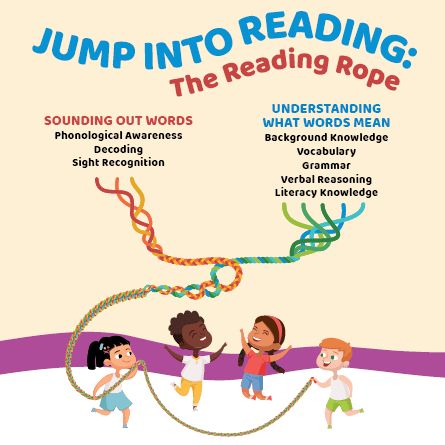Chicago Public Library welcomes a guest blog post from Kait Feriante, founder and CEO of Redwood Literacy, a Chicago organization focused on supporting dyslexia and other reading intervention needs.
Depending on your own experience with learning how to read, it may seem really simple or really complicated. About half of us learn how to read pretty easily, while the other half have more difficulty with it. Whatever your experience with learning to read may be, you are not alone.
Learning how to read is actually a pretty new invention in the history of humans on this planet. Most people did not know how to read until the invention of the printing press in the 1400s. Until the printing press, reading was considered a highly specialized skill that was limited to the very wealthy and highly educated. However, once we figured out how to mass-produce written text, more and more people learned how to read. Today, it is expected that everyone knows how to read to be able to be successful in our society.
So what is actually happening in the brain when someone learns how to read?
One of my favorite ways to break this down is by using a graphic called The Reading Rope, which shows a rope unraveling and coming back together.
The Reading Rope contains two main sections: word recognition and language comprehension. Each of these comprises several smaller strands. Woven together, these strands become the rope that represents complete skilled reading.
The first strand is word recognition, or sounding out words. In order to sound out words, you need to have three things:
- Phonological awareness: You can hear the individual sounds that makeup words.
- Decoding skills: You can match which letters go with each sound AKA sounding out words.
- Sight recognition skills: Over time and with practice, your brain automatically recognize words instead of having to sound them out every time you read them.
The other strand is language comprehension, or understanding what words mean. In order to understand the meaning of the words you read and hear, you need to develop four skills:
- Background knowledge: The more information you know, the easier it is for new information to find a place to connect to in your brain.
- Vocabulary: Having a large vocabulary and being able to use lots of words in lots of different contexts is important in understanding what you read.
- Language Structures: As you spend more time reading and get to know more about the way the English language is structured, it will get easier for you to understand what you are reading.
- Verbal Reasoning: You are able to problem-solve through written text. For example, can you follow instructions to find a solution?
- Literary Knowledge: Reading different types of things helps you understand what you read.
The better you get at each individual strand, the easier and more automatic reading becomes. Pretty soon, you don’t even think about it anymore.
See how complicated learning how to read actually is? If it’s been hard for you or somebody you know, that’s totally ok. It takes a lot of practice for everybody, and for some people, it can take years of practice. The good news is that if you work on all the strands in The Reading Rope, you can learn how to read. And learning how to read changes your life. It’s always worth the effort.
Need support for your reading journey? Find some more Resources to Support Learning to Read.




Add a comment to: What’s Happening When You Learn to Read?